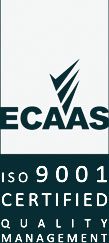Many people are now working from home to help prevent the spread of COVID-19.
Working from home has lots of benefits, but it also presents some challenges.
Roses in the Ocean has compiled 12 tips to help people look after their physical and emotional health while away from their regular workplace.
One way to stay productive at home is to do some exercise as soon as you wake up, then dive into your to-do list. Starting a project first thing in the morning can help you to make progress on it throughout the day, and the exercise helps our physical and mental wellbeing.
The mental association you make between work and an office can make you more productive. At home, do all the things you’d do to prepare for an office role: set your alarm, get a coffee, wear nice clothes, etc.
When working from home, you need to manage yourself. To stay on schedule, segment what you’ll do, and when, over the course of the day. If you have an online calendar, create personal events and reminders that tell you when to shift gears and start new tasks.
Your bedroom and the couch are often associated with leisure time. Rather than working in these spaces, dedicate a specific room or surface in your home to work.
Connection is key to your social and emotional wellbeing. Working remotely means we miss out on the day-to-day catch ups and conversation. Make use of technology to connect socially, as well as for specific work purposes – a quick text or an emoji can express how you’re feeling.
Nobody sprints through their work from morning to evening – motivation ebbs and flows throughout the day. When you’re working from home, it’s all the more important to know when those ebbs and flows will take place. Plan your schedule around it.
To capitalise on your most productive periods, save your harder tasks for when you know you’ll be in the right headspace. Use slower points of the day to knock out the easier, logistical tasks that are also on your plate.
Spending time figuring out what you’ll do each day can take away from actually doing those things. Plan your weekly tasks on Friday afternoon so you’re ready to go for the next week. Then, try solidifying each daily schedule the day before, making it feel more official when you wake up and get started on it. It’s important to let your agenda change though, if you need it to.
Doing your laundry is a built-in timer for your home. Use the time to start and finish something from your to-do list before changing the load. Committing to one assignment during the wash cycle and another during the dry cycle can train you to work smarter on tasks you might technically have all day to tinker with.
You might be working from home, but still have ‘company’. Make sure any roommates, siblings, children, parents and spouses respect your space during work hours. Just because you’re working from home doesn’t mean you’re home.
When working from home, it’s easy to get distracted – we can forget to take breaks altogether. Don’t let the guilt of working in the building you sleep in prevent you from taking five to relax. Use your breaks to get away from your desk. Go for a walk outside or spend time with others in the house.
You might be under the impression that working from home establishes more work-life balance. Be careful with that assumption! Working from home can also result in losing complete track of time.
In lieu of co-workers to remind you to leave the office, set an alarm at the end of the day to indicate your normal workday is coming to an end. You don’t have to stop at exactly then, but knowing the work day is over can help you to call it quits for the evening.
When you are in your own space, you can do your own things. Want to work in your pyjamas? That’s okay (though maybe not for video calls). The larger point is that you can set up and work in exactly the environment you want, one that works for you. Things that would feel odd in an office environment, like stretching exercises, can be performed with abandon when you’re alone.



